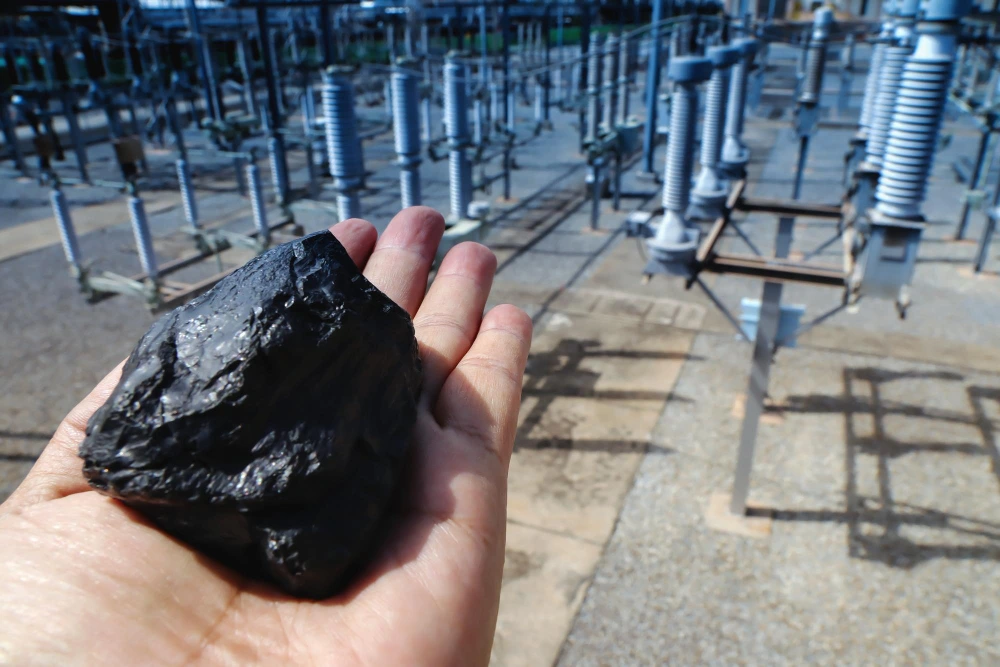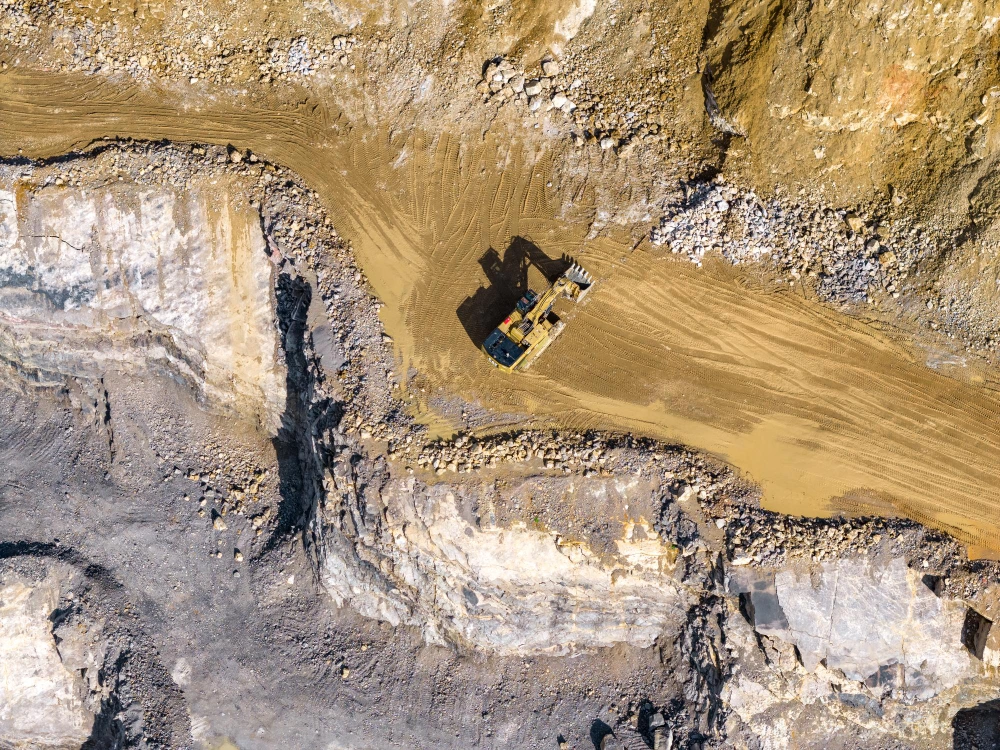Contents
Coal is a fossil fuel that is collected and extracted through coal mining. Coal mining is the process of extracting the coal from surface or an underground mine. This article outlines the coal mining process, including the main mining methods, and discusses the purpose of coal.
What is coal mining?
Coal mining is the process of extracting coal from the ground or from an underground mine. Coal is a sedimentary rock, formed when accumulated dead plant matter is protected from oxidation in peat bogs. These bogs can get buried through geological processes, with the resulting heat and pressure transforming the peat into coal.
Coal is mostly used as a fuel, with almost 30% of the World’s energy being supplied by burning it. Although used as a heating source since Antiquity, it became the driving force of the Industrial Revolution, when it saw extensive use in steam-powered engines as their most efficient and preferred fuel.
Coal mining covers all the steps of locating, collecting, and processing the coal, from being an underground sediment to being washed, crushed, and prepared to be used as an energy source.

What is the process of coal mining?
- Prospecting – discover coal resources through search
- Removing topsoil (if surface, open-pit mining) – this exposes the coal seams (coal deposits) of coal
- Extracting coal – either through surface (open-pit) mining or deep (underground mining)
- Preparing coal – the cleaning and transportation of coal
- Reclamation (if surface, open-pit mining) – the disrupted area is restored with topsoil
Step 1: Searching for coal seams
The first step of the coal mining process is to search for and discover coal seams. Coal seams are coal deposits, where the coal is located. Once the coal seam is discovered, coal samples are collected and analyzed, and the area is mapped out. This data is necessary in order to determine whether it is productive and profitable to drill in the area – in other words, whether there is a chance that we find more coal. This relates to both the technical feasibility of coal mining, meaning the area’s physical limitations on a successful mining operation, and the economic feasibility, including the size of the mine, coal quality, and marketability.
Additionally, there is much effort put into the prospecting stage of mining exploration, where the feasibility is determined more in detail.
Activities in prospecting
Geological mapping
Geological mapping includes compiling detailed field notes on coal seams, strata, rock types, geologic structures, and manmade structures. Additionally, calculation of material volumes and location of physical elements are determined using maps, which is extremely helpful in planning and accomplishing successful exploration and prospecting.
Drilling
Drilling is a reliable method for gathering information about coal deposits and mining conditions. This can be performed either by core drilling or rotary drilling. Core drilling, also known as diamond core drilling, is a reliable method for gathering exact data, while rotary drilling can in some cases be a faster operation, especially when drilling through soft or poorly compacted rock.
Geophysical exploration
Seismic, electric, magnetic, radiometric, and gravitational data is measured in geophysical exploration to detect anomalies in mineral deposits.

Step 2: Remove the topsoil
When using open-pit mining, the second step is to remove the topsoil. We want to remove the topsoil to expose the coal seams, using bulldozers to remove it and prepare the mining area. We also want to remove overburden material, for which we use scrapers. However, in underground mining, we dig tunnels and generally leave the topsoil alone.
Step 3: Extract the coal and choose a mining method
In the next step, coal is extracted from the coal seams, also known as the coal deposits. When mining for coal, mechanized methods are used, which can be categorized into surface or open pit mining and underground mining. Whether to opt for the former or the latter depends on where the coal is located, its depth and its surroundings.
Open-pit coal mining
Open-pit mining is a surface mining technique where successive layers of rock are removed. It starts with peeling off the surface layer. This method involves creating a large, terraced pit that expands outward and downward as ore and waste rock are excavated. In addition to coal mining, it is commonly used when mining for copper, iron, and gold.
- When? The coal is less than 200 feet underground.
- How? Large machines remove the topsoil and layers of rock to expose coal seams.
Benefits and challenges
Open-pit mining is cost-effective for large, low-grade deposits and allows for high productivity with the use of heavy machinery such as haul trucks, drills, and shovels. However, it has significant environmental impacts, including habitat destruction, dust generation, and long-term land alteration, which require careful management and reclamation efforts.
Underground coal mining
Underground mining is use when mining in deeper deposits, where the ore body is too deep or too narrow for open-pit mining. It involves constructing tunnels, shafts, and chambers to access and remove the coal.
- When? The coal is more than 50-60 meters below the surface.
- How? Miners operate in tunnels and shafts and move from shafts to shafts via elevators and trains. Machines help them to dig out the coal.
Benefits and challenges
While more expensive and labor-intensive than surface mining, underground mining minimizes surface disturbance and is more suitable for environmentally sensitive areas. However, it poses higher safety risks, including rockfalls, ventilation challenges, and potential subsidence.
Step 4: Process and prepare the coal
Extracted coal is loaded and transported for preparation at a plant where it is crushed and washed to remove impurities, including dirt, ash, sulfur, and other materials. From there, the coal can be transported to other areas around the mine using conveyors, trams, and trucks, or to consumers using long-distance transportation, often trains.
Step 5: Reclamation
When open-pit mining is used for extraction, considerable time is used to restore the land by backfilling the pits. Using bulldozers, scrapers, graders, and seeders, the disturbed area is covered by topsoil and recovers the natural starting material pre mining operations.

What is the purpose of coal mining?
Coal mining is an essential part of extracting coal for energy and fossil fuel production. As coal is the most abundant fossil fuel on Earth, industries have leveraged it for decades to produce heat energy. In fact, it fueled the Industrial Revolution in the 18th and 19th centuries, and coal was in many ways an accelerator of growing the global economy. Today, coal mines are highly productive, where digital, mechanized equipment ensures time- and cost-efficient open-pit and underground coal mining operations.
Coal mining summarised
Coal mining remains a multi-stage process, from performing a meticulous prospecting operation, to performing the operation cost-effectively, safely, and in as minimally harmful way as possible. Today, we’re seeing that technology is the key to achieving this, where much of the coal mining process has been mechanized in order to achieve efficient coal extraction for global energy and industrial use.
Continue reading
Advanced borehole steering technology in mining
Aziwell is a leading provider of directional drilling solutions and offers service, rental, and software products for directional drilling. At the heart of this is our advanced borehole steering technology, which reduces environmental footprint through fewer drill pads, operational time and CO₂ emissions. Our borehole steering is precise, does not require special rods or rigs, and has no depth limitations.



